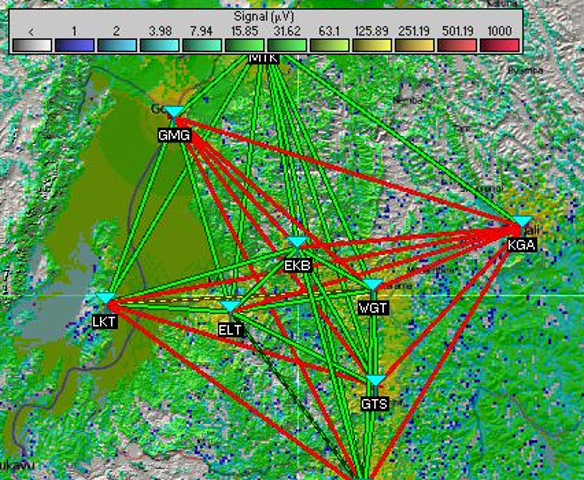In 2008, an associate had an opportunity to do some ministry in Rwanda. When he came back to the states, he assisted in raising $100,000 of investment for SohoStar to develop Internet cafes in the capital, Kigali. In December I visited Kigali and was introduced to a number of Government Officials. The problem is that Rwanda not only didn’t have Internet, but had less than 2000 wired telephones, and the cellular service was horrible and over priced.
When I returned to the states I began looking at all of the options to bring Internet to Rwanda. The nearest network connection other than satellite would be undersea cable and even that had not been run to the continent. The land of Rwanda was literally the land of a thousand hills and even without the foliage, it would have nearly been impossible to deliver services anywhere in the country.
In 2009, the Government of Rwanda (GoR) assisted in getting a satellite link from Virginia to Kigali, where I implemented WiFi hot spots over a portion of the city. I took servers designed by Advanced Intelligent Networks, wireless hubs, computers, monitors and VoIP devices and set up demonstrations for Government officials. Even by satellite, Advanced Intelligent Networks’ VoIP servers out performed the “traditional cellular phone services”.
One afternoon, we established a sample call between a GoR RURA(utilities) official in Kigali and our business in Parker, Colorado, comparing the latency, sound quality, and reliability on the 8,600 mile phone call by satellite, over the US Internet backbone, and our custom built servers. This opened an opportunity to compete for GoR investment in a PPP to implement a Rwanda national communication network. The blessing is that there was no other infrastructure to deal with, the curse was that there was no infrastructure, no equipment, and no line of sight for radio signals to homes. On top of that Rwanda is about the size of the state of Maryland.

With the opportunity to implement a fresh start and months of research modeling terrain and signal propagation using Space Shuttle survey maps, approximate population density including rural villages, and bustling cities, and tower locations, Roland submitted a proposal to the Government of Rwanda.
Advanced Intelligent Networks (AINC) was looking into a Radio Modem design that would occupy 8 radio licenses ($1,000US / yr), 40 or so towers and hundreds of AINC designed Kagera community radios for an approximate network cost of $400,000 US. The Radio Modems provided 34 mbits of bandwidth over a mesh network. The phones (Akanyana)were designed to utilize this network that would cost citizens 1/10 of what they were paying for phone and service. This opened up additional opportunities for email, Internet service, streaming content, distance learning and tele-medicine.
This project received an offer by the Rwanda Social Security Administration to implement the project, which was rescinded shortly after when a 3rd party offered to fund the entire project implemented through our Government contact who formed a new company (Go-Networks) with the person who originally got me to Rwanda, and then demanded Advanced Intelligent Networks technology and research without compensation. Go-Networks failed a couple of years later, when they couldn’t meet their technology commitments.
I learned a lot in 2008-2009 about corruption, kickbacks, and governments taking advantage of people that are having a hard time surviving. I’m looking at similar activities in the US which has so much more in wealth and resources, and where there are fantastic opportunities to develop the Rwanda strategy and products for US rural America.